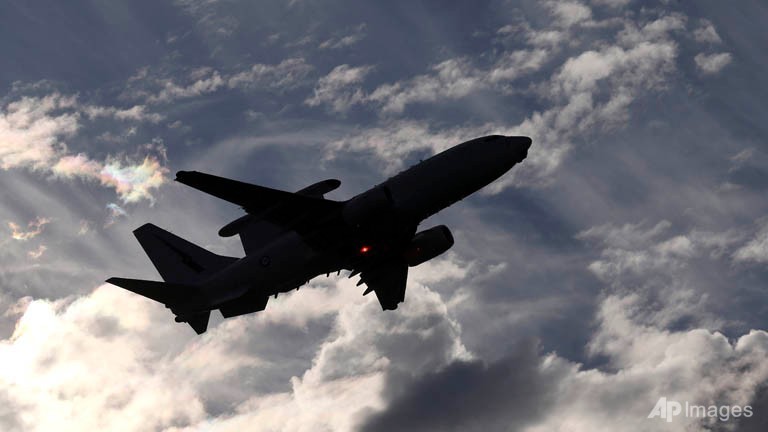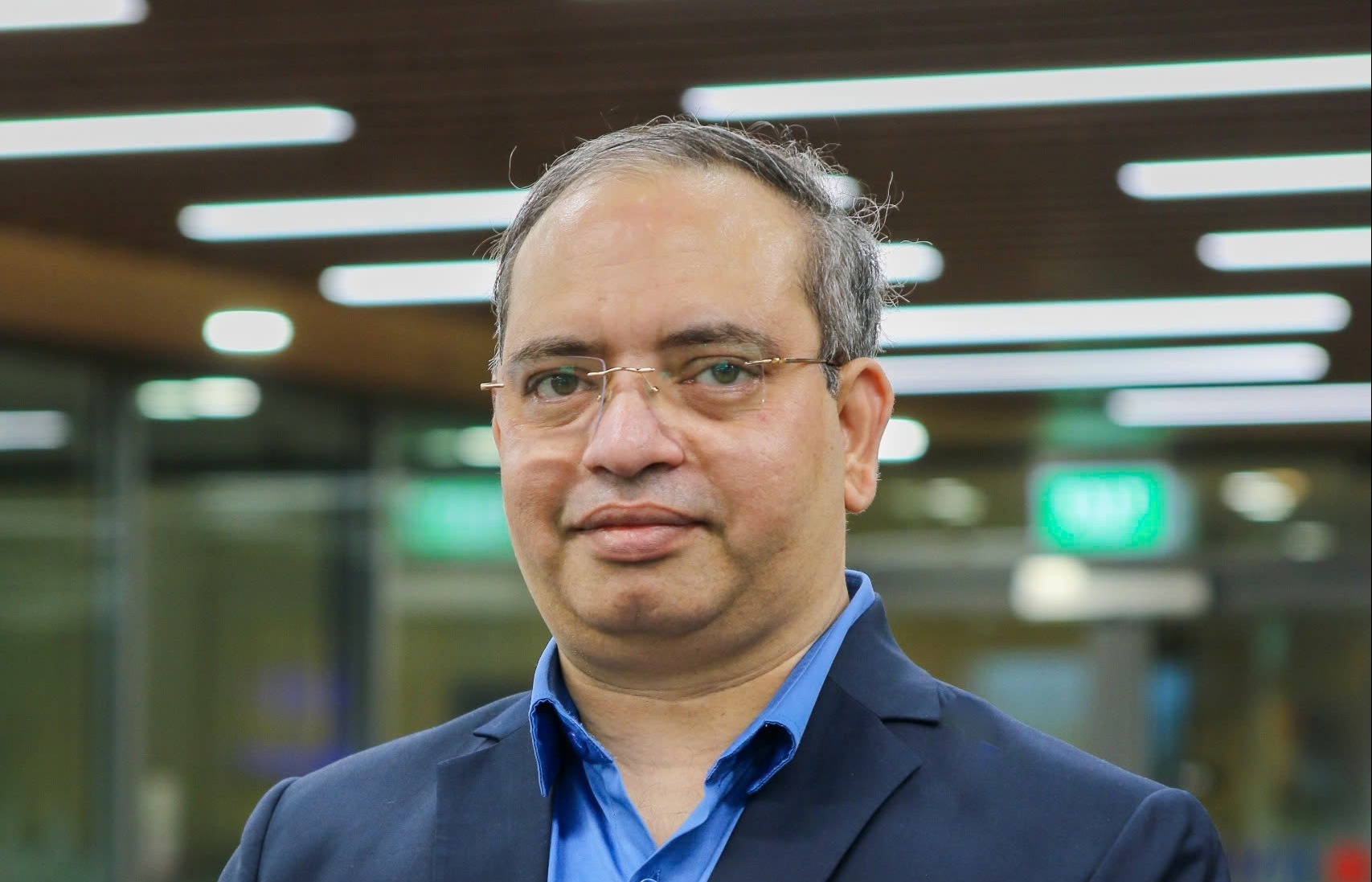Signal detected in MH370 search "consistent" with black box

A Royal Australian Air Force E-7A Wedgetail takes off from Perth Airport on route to conduct search operations for missing Malaysia Airlines Flight MH370 in southern Indian Ocean, near the coast of Western Australia, on April 5, 2014. (AP/Rob Griffith)
>>"Black box" detector joins MH370 ocean search
PERTH: A signal detected by a Chinese ship searching the Indian Ocean for flight MH370 is "consistent" with the type emitted from the aircraft black box, according to the Australian ex-military chief in charge of the hunt.
China's official Xinhua news agency reported Saturday that a black box detector on board the Chinese search ship had picked up a signal at a frequency of 37.5kHz.
The Underwater Acoustic Beacons on the MH370 flight data recorder and cockpit voice recorder both operate at that frequency, a spokesman for Honeywell Aerospace, the manufacturers of the black boxes on board the missing plane, told AFP.
Air Chief Marshal Angus Houston, head of coordination in the search, said the reported characteristics of the signal "are consistent with the aircraft black box".
A number of white objects were also sighted on the surface about 90 kilometres from the detection area, he said, according to a statement by the Joint Agency Coordination Centre (JACC).
However, he warned: "There is no confirmation at this stage that the signals and the objects are related to the missing aircraft."
Australian Prime Minister Tony Abbott meanwhile said searchers were "hopeful but by no means certain" that the signal was related to MH370.
In a statement Sunday, the JACC reiterated that the signals had not been verified.
Up to 10 military planes, two civil planes and 13 ships will scour the remote waters on Sunday, almost a month to the day since the plane carrying 239 passengers and crew disappeared on a flight from Kuala Lumpur to Beijing on March 8.
The hunt will concentrate on about 216,000 square kilometres of the Indian Ocean around 2,000 kilometres (1,200 miles) northwest of Perth.
The Chinese search ship Haixun 01 picked up the pulse signal at about 25 degrees south latitude and 101 degrees east longitude, Xinhua said in a brief dispatch Saturday.
Australia has asked China for more information, Houston said, and was considering deploying search assets to the area.
Chinese officials also warned the signal had not yet been identified.
"Suspected pulse signal picked up by Haixun 01 has not been identified yet," the China Maritime Search and Rescue Center said on a verified microblog.
Australian Defence Minister David Johnston echoed the words of caution.
"This is not the first time we have had something that has turned out to be very disappointing," he told ABC television.
Australian and British vessels are currently involved in a round-the-clock underwater search hoping to pick up a signal from the black box, but the battery powering those emissions is nearing the end of its roughly 30-day life span.
The Ocean Shield, which is carrying a US Navy black box detector, and HMS Echo, which has a similar capability, are searching a 240-kilometre track of ocean in hopes of detecting sonic pings from the recorder.
However, progress is painstaking as vessels must move slowly to improve readings, and officials have acknowledged there is no solid evidence the plane went down in that stretch of sea.
Anish Patel, president of US black box beacon manufacturer Dukane Seacom, said he was "highly sceptical" about the Chinese report Saturday.
"I would like to understand why not two signals -- there should be a second beacon from either the flight data recorder or the voice recorder. So if the recorders are adjacent or within reasonable proximity... they should have detected possibly two signals," he told CNN.
"So let's get some additional assets in the water so we can corroborate, before we get everyone's hopes up, before we disappoint these families one more time I think we need to corroborate."
But Charitha Pattiaratchi, a professor of coastal oceanography at the University of Western Australia, said the news was exciting.
"The 35.7 kHz is a man-made noise. There's not another noise at that frequency," he told AFP, adding that this was exactly why black box pingers were set at this frequency.
"A whale or a dolphin or rain or an underwater earthquake... they have a completely different frequency."
Earlier in Kuala Lumpur, Transport Minister Hishammuddin Hussein said Malaysia would, in line with international agreements, appoint an independent "investigator in charge" to lead an international team to probe what happened to MH370.
The team will include Australia, China, the United States, Britain and France.
Hishammuddin again declined to provide any detail from Malaysia's ongoing investigation, however, saying he remained focused on finding the plane and its black box.
Malaysian authorities believe satellite readings indicate MH370 crashed in the Indian Ocean, far off Australia's western coastline, after veering dramatically off course.
But no proof has been found that would indicate a crash site, and Australian Prime Minister Tony Abbott has described the oceanic search as "the most difficult in human history".
What the stars mean:
★ Poor ★ ★ Promising ★★★ Good ★★★★ Very good ★★★★★ Exceptional
Latest News
More News
- VLCA 2024 honours corporate governance excellence as listed companies raise the bar (November 18, 2024 | 09:00)
- Trump's trade policies could shape Vietnam's economic outlook: Dragon Capital (November 15, 2024 | 16:56)
- Prioritising corporate governance for Vietnam’s sustainable growth (November 14, 2024 | 16:50)
- Vietnam eyes nuclear revival to bolster energy security (November 14, 2024 | 16:46)
- German businesses explore investments in Dong Nai (November 08, 2024 | 18:02)
- Vietnamese consumer sentiment outperforms regional averages (November 08, 2024 | 18:00)
- Exchange and interest rates forecast to remain stable after US election (November 07, 2024 | 14:04)
- Industrial real estate stocks benefit from US election results (November 07, 2024 | 13:56)
- 2024 sees $1.41 billion in fintech funding so far (November 07, 2024 | 08:13)
- Trump at 266 electoral votes, Harris at 195: US media (November 06, 2024 | 14:30)




















 Mobile Version
Mobile Version